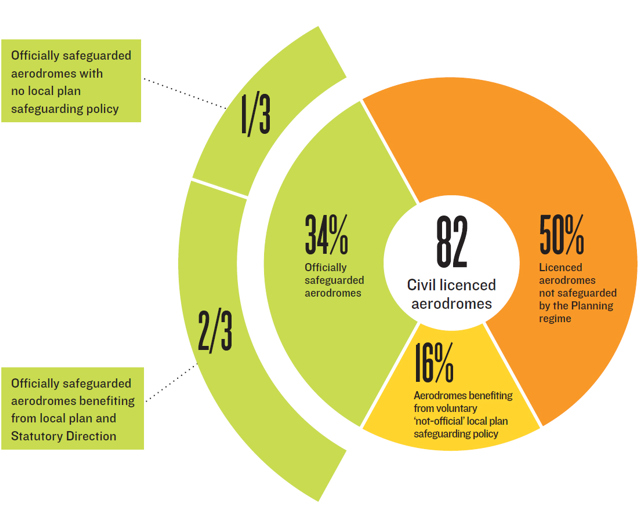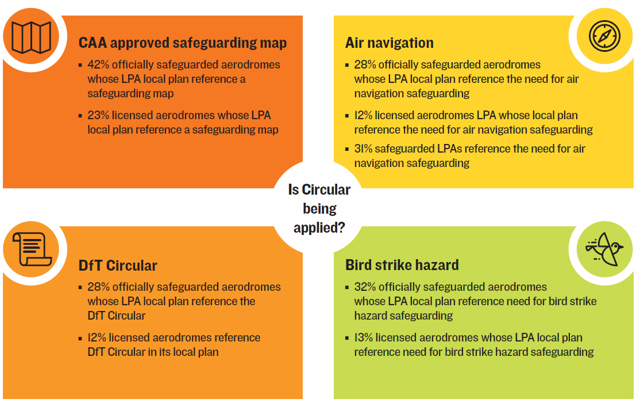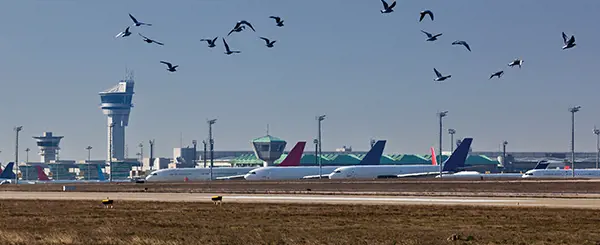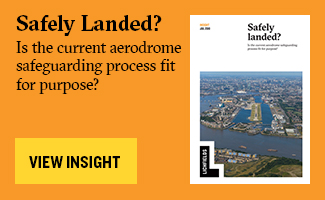Safety is of course fundamental to the aviation industry. Aerodromes, which are hubs for a wide range of aviation activity, must be able to operate within a safe environment. But how well is this requirement to safeguard operations and protect people living and working near aerodromes being applied, when proposals come forward for new development?
The civil aviation and planning regimes set out a system to meet this safety objective; it is a complex system that often gives rise to uncertainty as to its application. Under the civil aviation regime, all licenced aerodromes must ensure that the aerodrome and its airspace are safe for use by aircraft. Yet only a select few are officially safeguarded under the planning regime and they benefit from Statutory Direction. But it is unclear how this arbitrary group of officially safeguarded aerodromes has been identified. The remaining licenced aerodromes can only seek voluntary protection and this is at the discretion of the local planning authority.
Lichfields has reviewed the local plans of all of the local planning authorities (LPAs) in England with a civil licenced aerodrome to see how well (or indeed if) each aerodrome is appropriately safeguarded. The
research has identified a flawed system with evident gaps in policy, meaning not all aerodromes are appropriately protected.
How well does the safeguarding Circular work in practice in England?

92 local plans, relating to 82 corresponding aerodromes, have been reviewed. Our research has identified that only 50% of licenced aerodromes are protected in some way under the planning regime, with either an official or voluntary safeguarding status. Of the select few that are officially safeguarded under the planning regime, not all have a safeguarding policy in place within the local plan, despite the requirement to do so. In fact, a worryingly 32% of officially safeguarded aerodromes do not have a safeguarding policy in place. More positively, 13 ‘not officially safeguarded’ aerodromes have secured voluntary safeguarding with their LPAs and have policies in place in their local plans, indicating that these authorities and the aerodromes concerned understand the importance and value of safeguarding.
Is the safeguarding Circular being applied to development plans in England?

The national safeguarding circulars are outdated and no longer meet their intended use. Since adoption, the policy environment has changed significantly, particularly with the introduction of localism (2011), the National Planning Policy Framework (2012), a new aviation policy framework (2013), an Industrial Strategy (2017), and Brexit. The aviation industry continues to experience growth and play an important part in the UK economy. These factors all give greater weight to the need to protect an aerodrome’s ability to carry out safe and efficient operations. A review and update of national advice and how safeguarding is implemented at a local level is required, with new guidance being issued. Government, with LPA and aerodrome support, could take safeguarding policy further with a review and update to Circulars 1/2003 and 1/2010.
Many of the LPAs reviewed are yet to adopt post-NPPF local plans, meaning that the current safeguarding policy – if there is one in the first place - could be more than 10 years’ old and will be likely not to reflect the current position of the aerodrome and its operational status. But these deficiencies create an opportunity for aerodrome operators to seek to incorporate safeguarding policy in reviewed and emerging local plans – it’s important for the industry to act on this now.
From our work advising aerodromes, local authorities and developers on schemes at or close to aerodromes, we are familiar with the complexities of the land use planning safeguarding process, and the policies that might be put in place to meet this safety objective – both in terms of how they should be applied and the issues that arise in their application.
If you would like to learn more about our research on aerodrome safeguarding please
get in touch.




